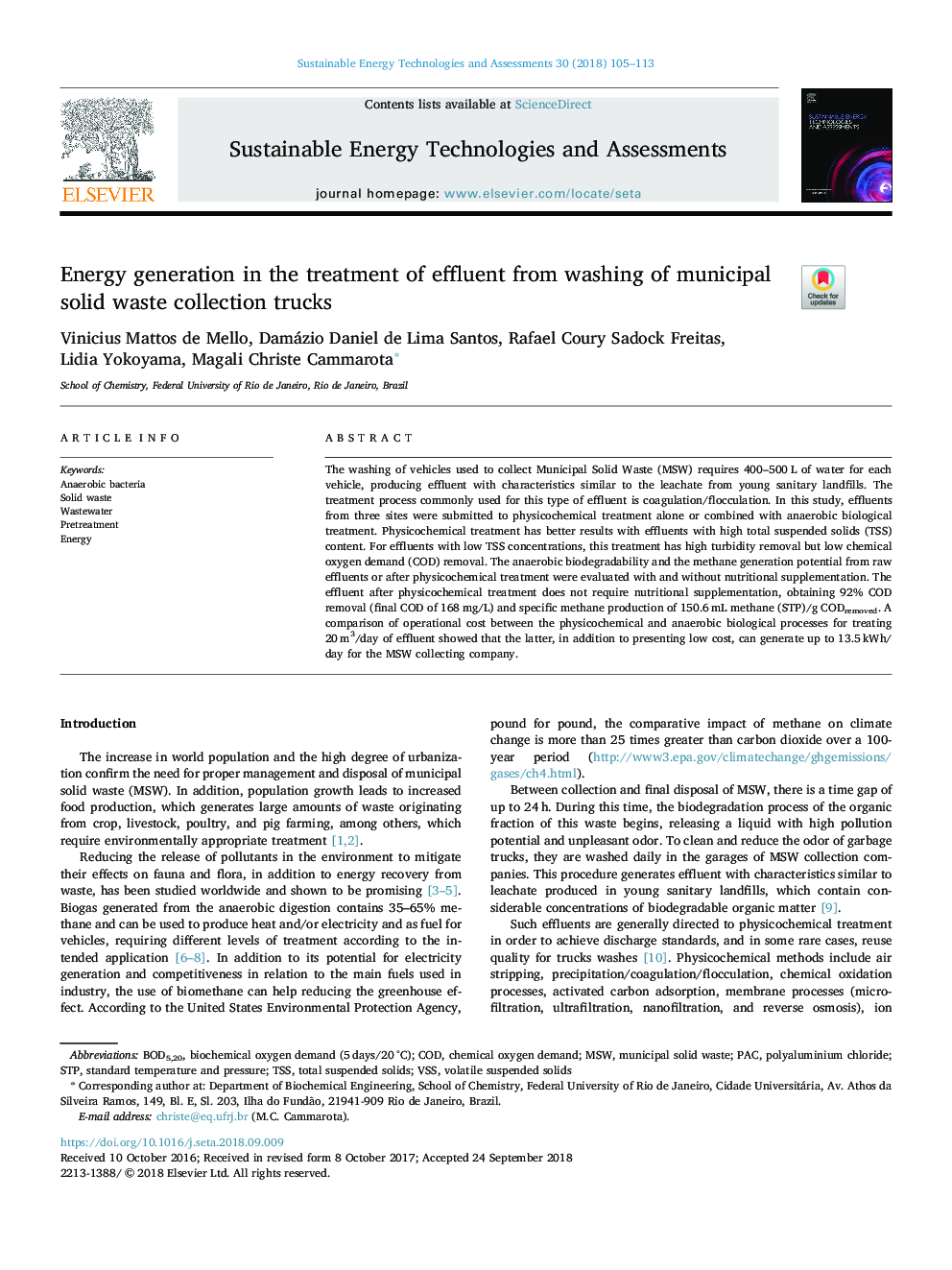| Article ID | Journal | Published Year | Pages | File Type |
|---|---|---|---|---|
| 11029482 | Sustainable Energy Technologies and Assessments | 2018 | 9 Pages |
Abstract
The washing of vehicles used to collect Municipal Solid Waste (MSW) requires 400-500â¯L of water for each vehicle, producing effluent with characteristics similar to the leachate from young sanitary landfills. The treatment process commonly used for this type of effluent is coagulation/flocculation. In this study, effluents from three sites were submitted to physicochemical treatment alone or combined with anaerobic biological treatment. Physicochemical treatment has better results with effluents with high total suspended solids (TSS) content. For effluents with low TSS concentrations, this treatment has high turbidity removal but low chemical oxygen demand (COD) removal. The anaerobic biodegradability and the methane generation potential from raw effluents or after physicochemical treatment were evaluated with and without nutritional supplementation. The effluent after physicochemical treatment does not require nutritional supplementation, obtaining 92% COD removal (final COD of 168â¯mg/L) and specific methane production of 150.6â¯mL methane (STP)/g CODremoved. A comparison of operational cost between the physicochemical and anaerobic biological processes for treating 20â¯m3/day of effluent showed that the latter, in addition to presenting low cost, can generate up to 13.5â¯kWh/day for the MSW collecting company.
Keywords
Related Topics
Physical Sciences and Engineering
Energy
Energy Engineering and Power Technology
Authors
Vinicius Mattos de Mello, Damázio Daniel de Lima Santos, Rafael Coury Sadock Freitas, Lidia Yokoyama, Magali Christe Cammarota,
